
Developer: PolyKnight Games
Publisher: Aspyr
Platform: PC, PS4, Xbox One, Mac OS X, Linux
InnerSpace – Review
Mankind has always had the dream of flight, from the brothers Wright to NASA, being able to take to the skies and soar. Flight has long been within reach of people now, with pretty much every country having an airport these days. That doesn’t mean the dream is dead however, as exemplified by when the successful kickstarter campaign for InnerSpace ended. It is a powerful fantasy, especially if executed well. InnerSpace promises to deliver on this dream. How well it delivers though, is what we’re here to find out.
Story
You are playing as a construct, a winged glider in an ancient world called the Inverse. you wake up in a big chamber, that is empty, save for one ship, sailing on the edge of the chamber. It will identify itself as the archaeologist. He’s been working on collecting the world’s knowledge before it gets destroyed, and you’re about to help him. He names you the Cartographer and directs you from the chamber you start your journey from to the other chambers in the game. As you play the game, it is your job to help figure out the history of the Inverse and help out the Archaeologist to archive everything he wants to know.
Graphics
The Inverse is, as the name suggests, the inside of a (roughly) spherical world. The walls are mostly made of rough rocky outcroppings, and strangely impassible seas, with a minimalist art direction. This is also what you’ll see most of the time, the blue of the water, and the brownish grey of the stone with very little texture. Very rarely are the dull colors broken by a flag hanging off a structure or the accents on the Archaeologist’s vessel in the sea. But with the problems we’ll discuss later when we’re getting to the gameplay section, this can make the game really boring to play at times, and at other times outright difficult to play. You may not be able to differentiate between the water level and the ground.
Sound
Since the game revolves around its chill story and discovery heavy gameplay similar to games such as Journey and Grow Home, InnerSpace has a soundtrack that mirrors that. With the theme of mechanics and water, you’ll find some cool and upbeat synth-driven soundtracks to accompany your gameplay. The songs are on short loops however, especially in the early parts of the game which may make or break your experience. The soundtrack does open up more and more once you get through some of the earlier maps though, with songs becoming longer and with more intricate components. Most of the other sounds are some context sounds like the rush of the moving water of the oceans and the sliding sound made when you dive from the sky to the water.
Gameplay
InnerSpace plays as a flight simulator with adventure elements. You’ll have all the normal controls you have with games where you fly planes, pitch, yaw, and roll like you’d expect. The difficulty in this game, lies a lot in its control when combined with the navigation. As previously mentioned, due to the art direction the developer took, it can get extremely hard to navigate the map. All of the surfaces look alike, with only context clues to make out how you’re positioned. Players may often need to navigate through small spaces and tunnels with little help to distinguish the walls near the player or at the end of the tunnel, and the bottom of the sea and the water surface can also be hard to make out, being only distinguished by the wave of the surface, and the light filtering through to the bottom.
Most of the activities revolve around exploring the maps and discovering the relics the ancients left behind. These relics may give you new abilities or skins for your glider, others you’ll find are broken in parts and need to be reconstructed. With the heavy emphasis on discovery and the problems with navigation mentioned earlier, this makes the game frustratingly difficult to play at times. Players may find themselves wandering about aimlessly, hoping to find a new cavern they have not yet explored, or a tunnel they have missed earlier. Flying around in circles can become boring really quickly and so the game is best enjoyed in small bursts because of it.
Conclusion
InnerSpace has a lot of good individual components. The flight mechanics are responsive, and you feel a genuine freedom when exploring the maps. The soundtrack is really happy-go-lucky, especially in the later parts of the story, and when you figure out a puzzle there is a real sense of achievement. That being said, the separate components of the game don’t really make the game come together in any coherent sort of way. Due to the problems with finding your way on the map, the sense of satisfaction is washed away every time you do find that last piece you’ve been looking for, and the aimless flying you’ll be doing the rest of the time makes it difficult to keep playing the game. The game’s art direction looks fun at first, but when you get up close you can’t really distinguish the walls from the floor and roof anymore, which doesn’t help its cause. All of this put together means InnerSpace is best enjoyed in short bursts if you’re looking for some calming gameplay after a high stress competitive gaming situation, but we don’t expect a lot of players to sink endless hours into the title.
InnerSpace - Review,
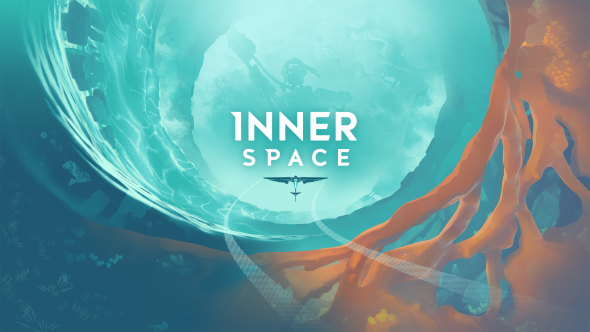
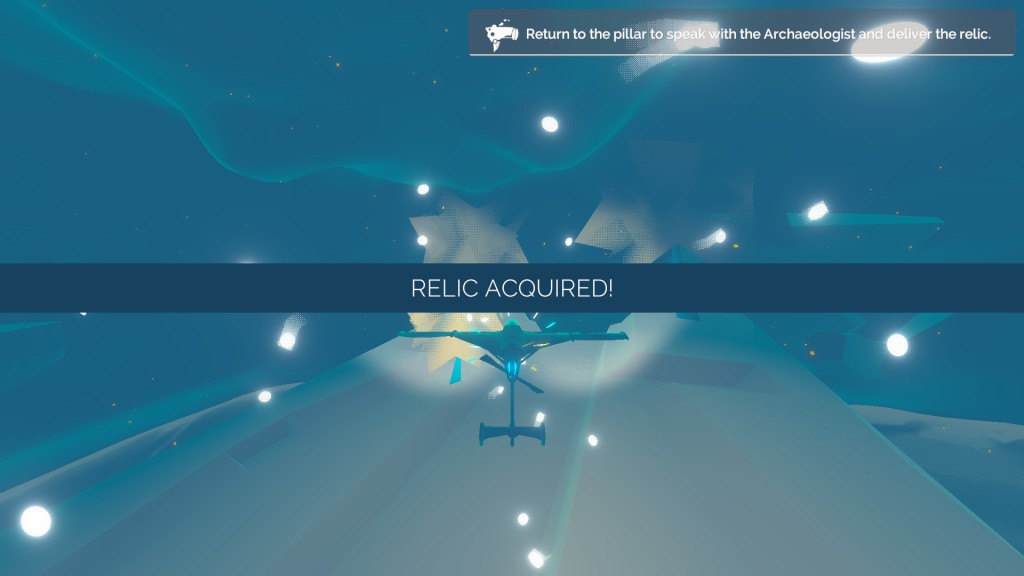
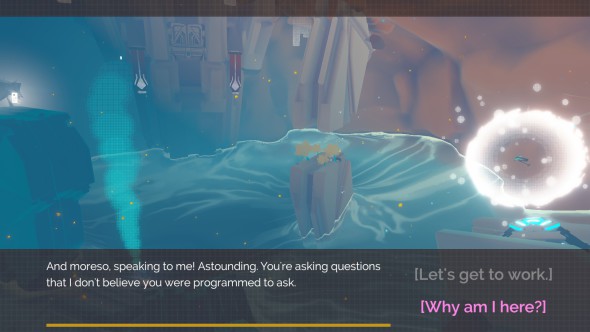
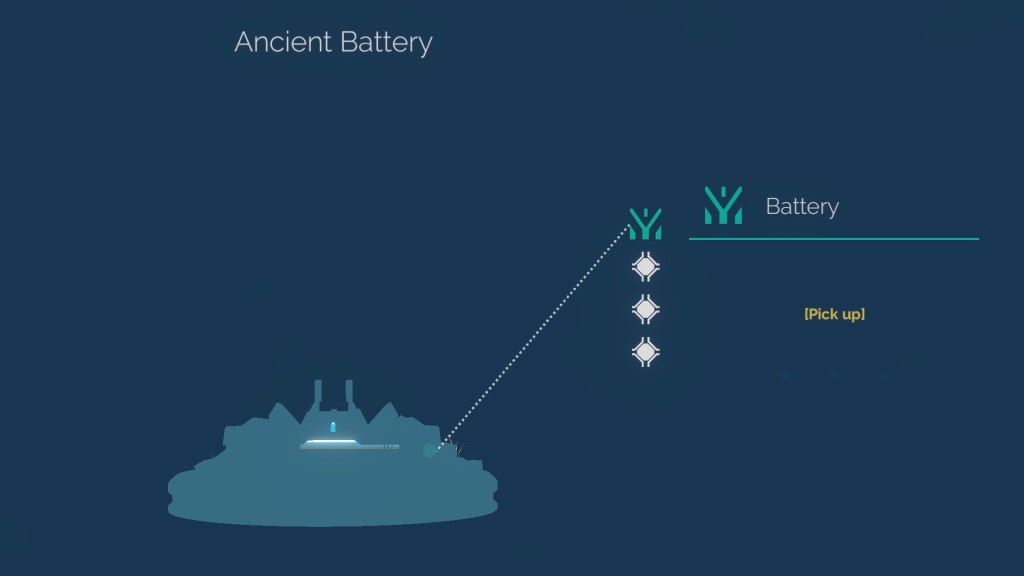
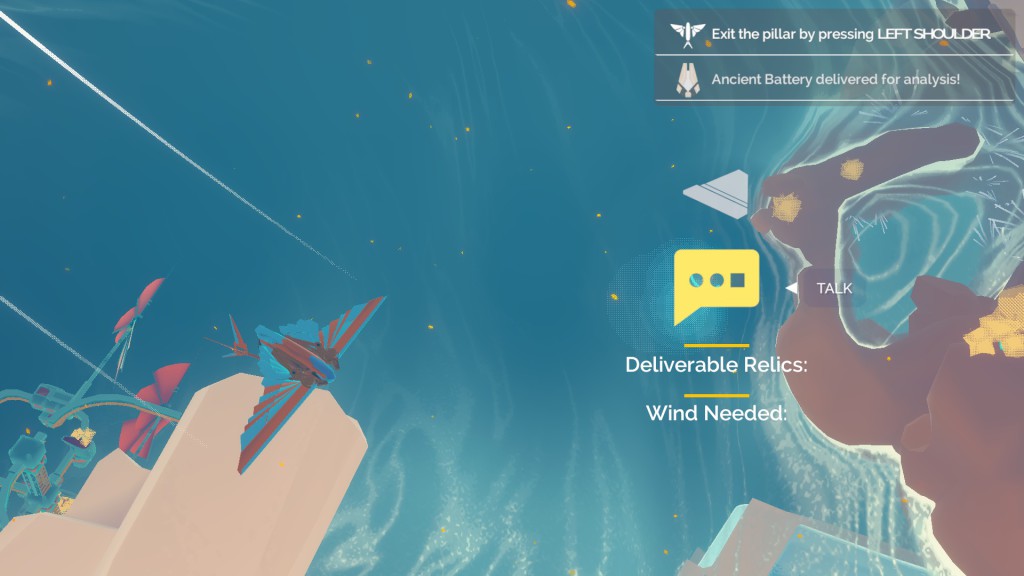




No Comments